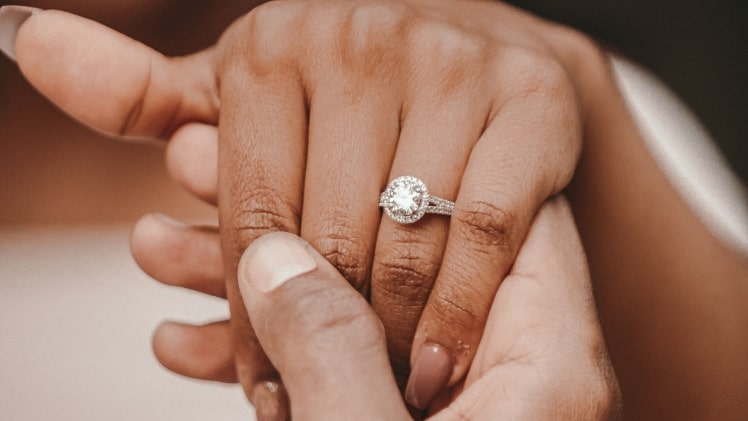Your left hand is likely to rock a shiny new addition as soon as you say “yes.” It might be the last thing on your mind at such a happy time, but engagement ring insurance is an important consideration.
Insurance for engagement rings – what is it?
In the event of loss, theft, or damage to your engagement ring, engagement ring insurance is a contractual way of protecting yourself from financial repercussions. Jewelry items typically fall within the coverage scope of the policy and will either be repaired, replaced, or reimbursed.
How do you replace a lost ring? Can you replace one that has been stolen? Can you replace one that has been damaged? It’s important that nothing happens to that beloved rock. A ring insurance policy can offer financial protection and peace of mind when you need it most, whether you’ve lost a stone at the gym or forgotten your engagement ring at the beach. A ring is valuable enough to insure if you’d be upset if it were lost, broken, or stolen, says Tyler Krowiorz, an insurance expert. It would be wise to make sure your engagement or wedding ring is insured in case of a loss of sentiment, fear of wearing other uninsured jewelry, or insufficient funds to replace the item.
Any damage to your engagement or wedding ring can be heartbreaking, but knowing it’s protected can help ease the pain. It can be reassuring to know that you are protected from some of the more harrowing possibilities that life can throw at you, even though no two policies are identical. Jewelers Mutual protects the jewelry you wear in real life, says Krowiorz. Our insurance covers mysterious disappearances, loss, theft, damage, and worldwide travel. We understand that it is impossible to pinpoint how and where your items went missing.”
Insurance for engagement rings
Krowiorz notes that the rate is determined by a number of rating variables and factors (like a car or home insurance policy) in order to determine a customized rate based on the individual’s risk characteristics.
In addition to the value of your ring, where you live (and the theft rate in your area), and whether your policy has a deductible, the cost of coverage will vary greatly. A policy with a lower or no deductible will always have higher premiums.
Krowiorz says that the cost of insurance is typically one to three percent of the item’s value, depending on the risk characteristics of the item. Accordingly, you should expect to pay about $1 to $3 for every $100 your ring is worth. Therefore, a $10,000 bauble can be expected to fetch an annual premium of $100 to $300.
Engagement Ring Insurance Tips
Insure your engagement ring as soon as possible
In the same way you would insure a vehicle prior to driving it off the lot, your soon-to-be fiancé (or fiancée) can insure the ring as soon as it is purchased and in their possession. Initially, you may not think that anything could happen to your precious and sentimental token, but the sooner you insure it, the sooner you will be protected. Your partner or you can begin shopping for ring insurance providers once the policy has been purchased. According to Krowiorz, timelines can vary based on individual circumstances. The application, appraisal, and sales receipts can be submitted immediately, or coverage can be provided within two to four business days, if the application is subject to underwriting review.
Coverage Providers
There are two options when it comes to insuring your engagement ring (or other valuables, for that matter). When you have homeowners insurance or renters insurance, you can purchase a rider to cover your engagement ring. However, you should keep one thing in mind. According to Krowiorz, “a jewelry claim against your homeowner’s policy may affect your entire policy.” So, if your engagement ring is ever stolen or lost, your homeowner’s insurance premium may go up or you may not be eligible for renewal.
Obtain a valuation
Without knowing the value of your ring, you can’t protect it.
All key aspects of value, such as carat weight, cut, color, clarity, quantity, and shape of diamonds, metal type, weight, and shape of other stones, as well as any identifying markings, model numbers, or stamps, are considered in an appraisal. As well as the retail price in the local market, the origin of the material used, and workmanship are considered. Insurers will typically require an appraisal for items of higher value (for example, rings worth $5,000 or more), but a receipt or invoice will suffice for less expensive items.


